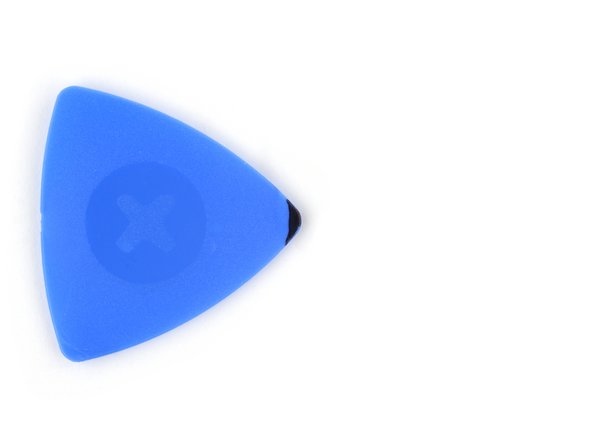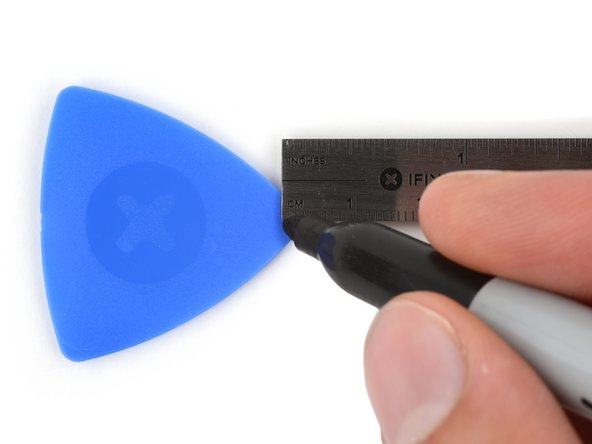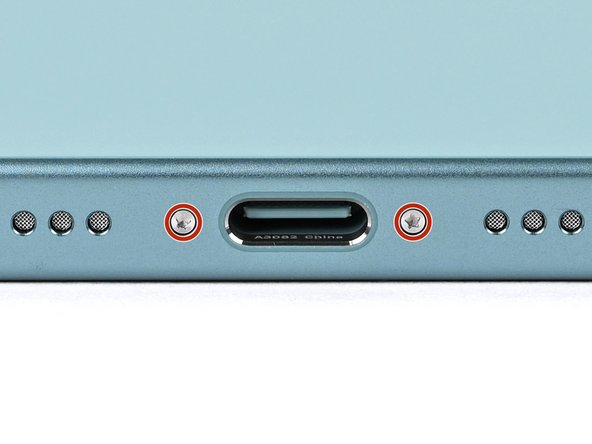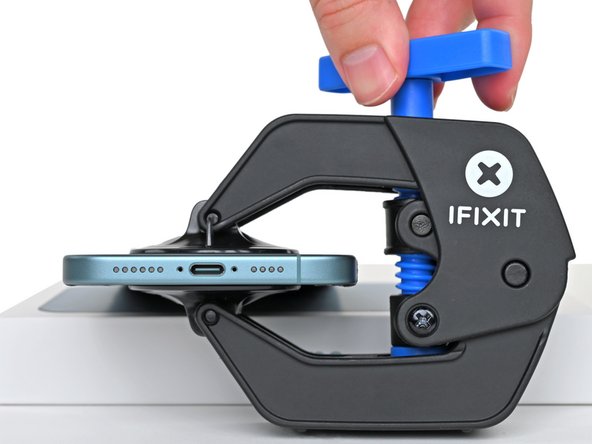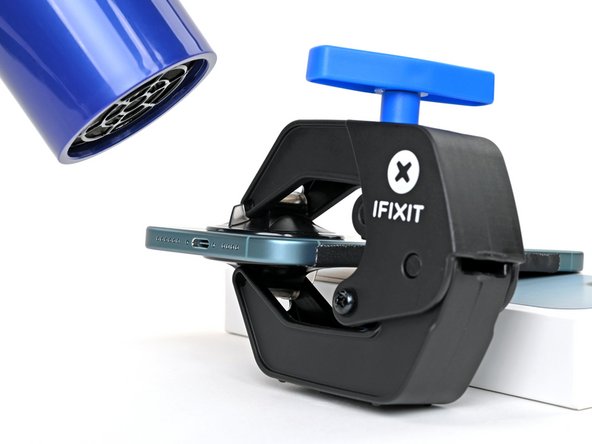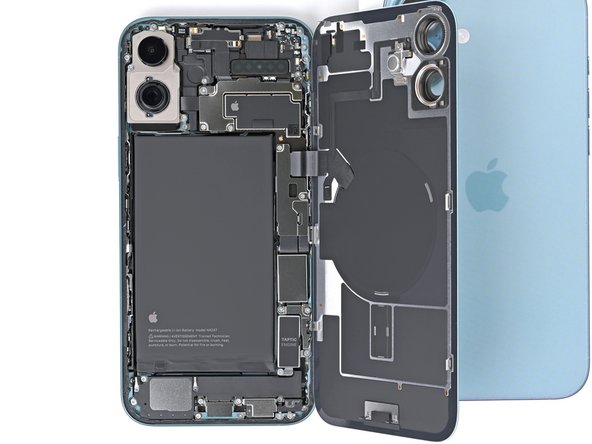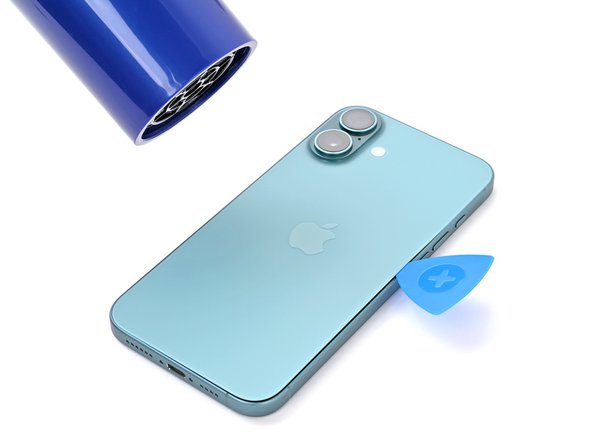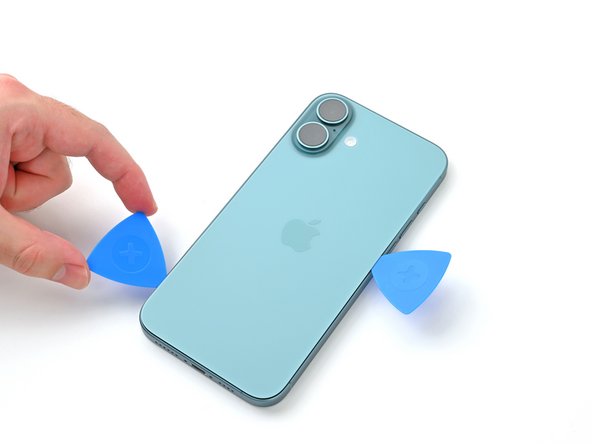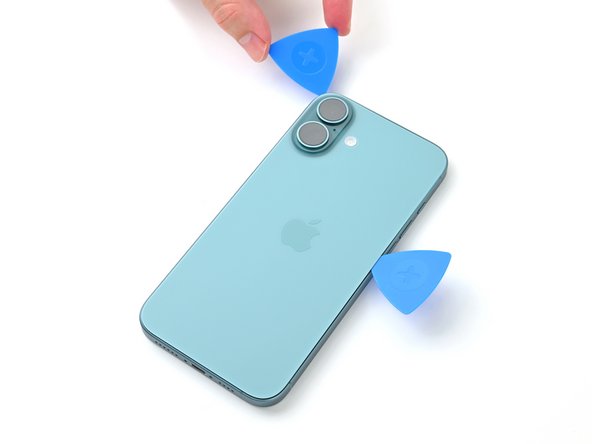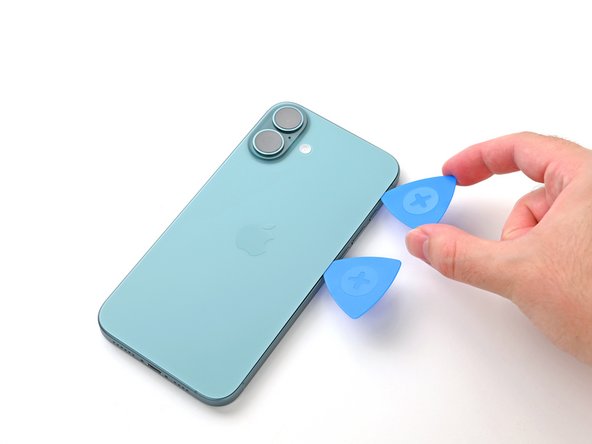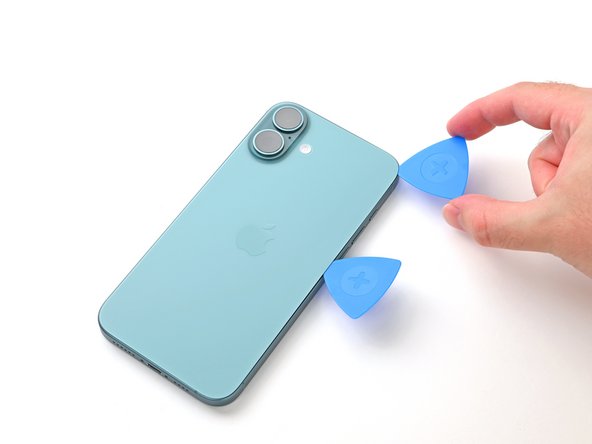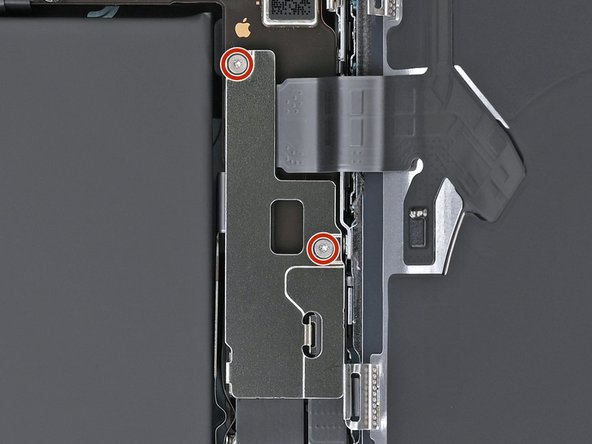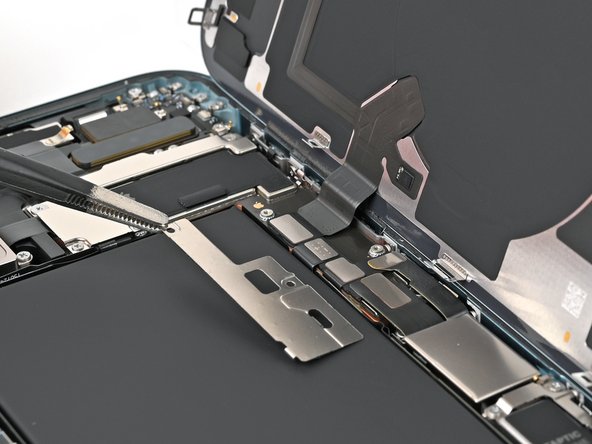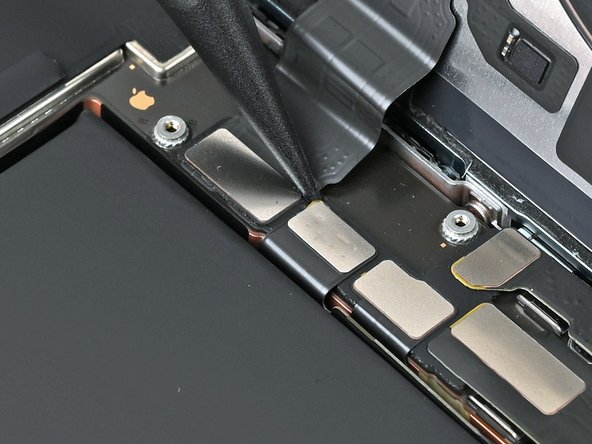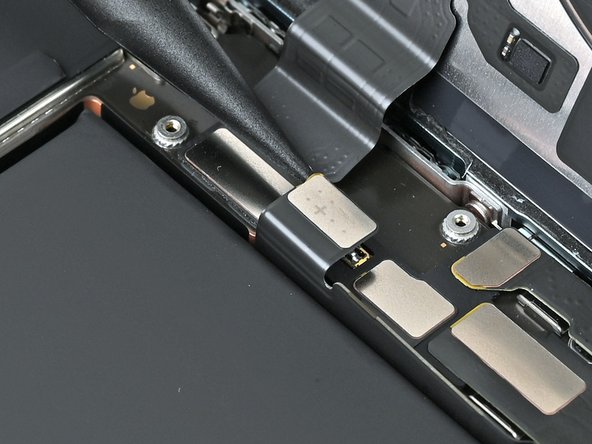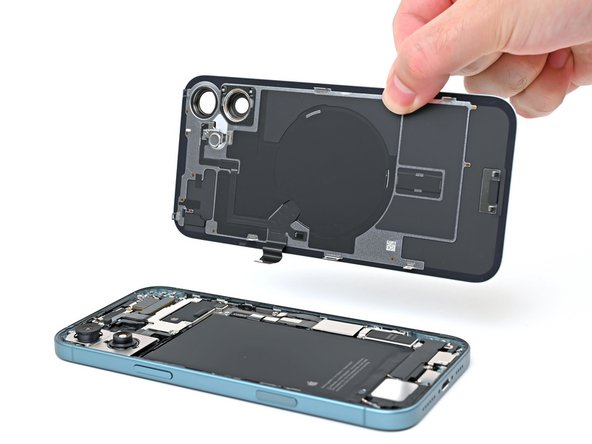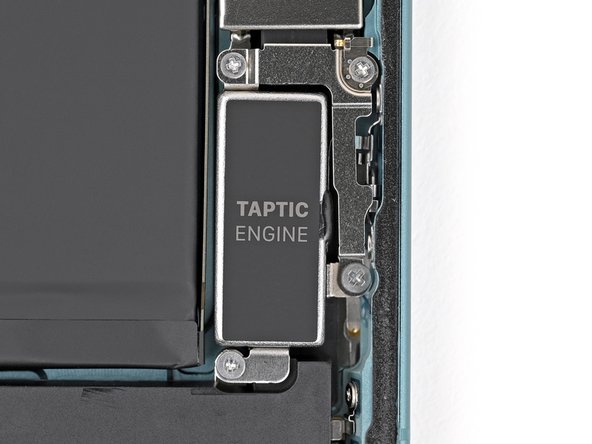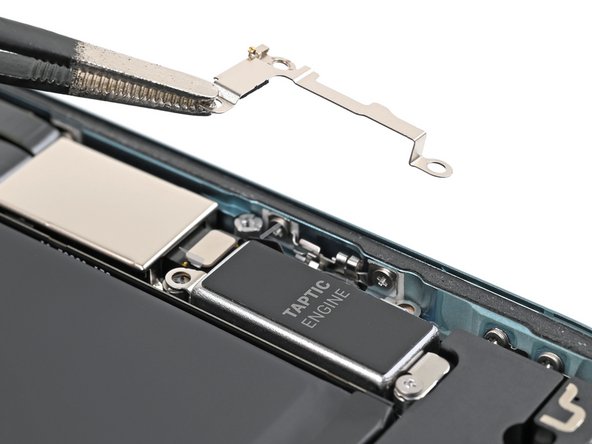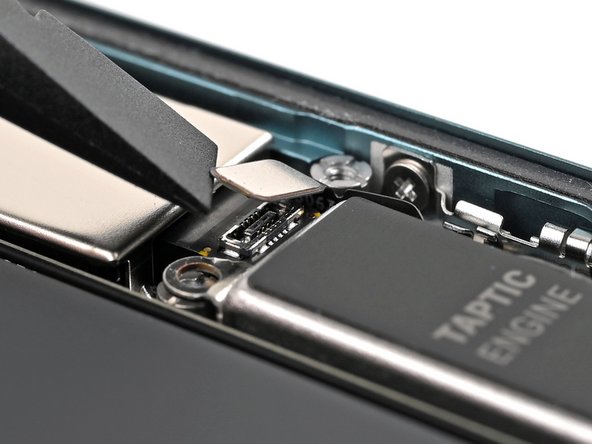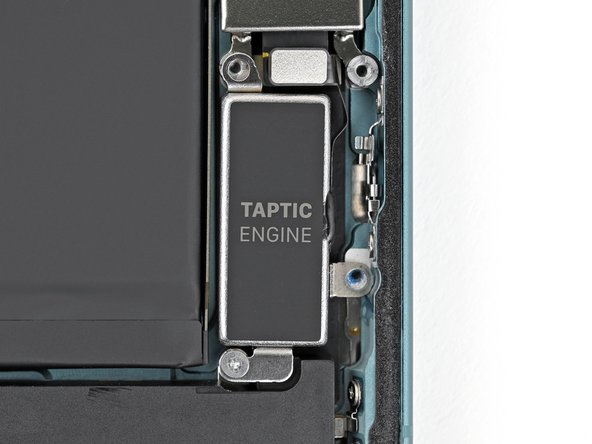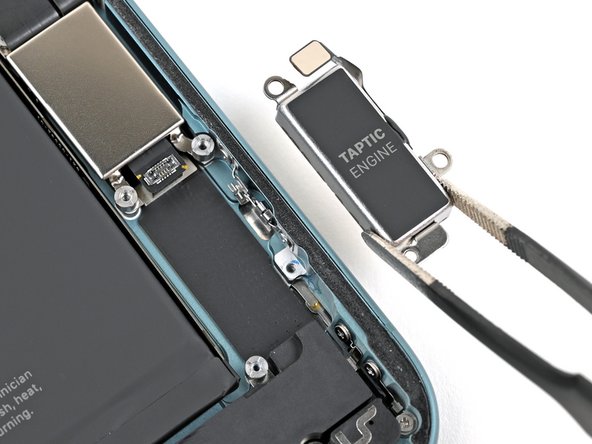iPhone 16 Plus Taptic Engine Replacement Tutorial
Duration: 45 minutes
Steps: 30 Steps
Ready to give your iPhone 16 Plus a little TLC? This guide will help you swap out the Taptic Engine. If your phone’s vibrations are feeling a bit shaky or are playing hard to get, it’s time for a change. Don’t forget to grab some replacement back glass adhesive to wrap up this repair like a pro!
Step 1
Let your phone’s battery drop below 25%! Keeping a fully charged lithium-ion battery around can be a bit risky. So, give it a break and keep things safe.
– First things first, let’s disconnect those cables from your phone. Give it a little breather!
– Now, hold down the power button along with either volume button, and slide to power off your phone. You’re doing great!
Step 2
Find a nice, flat spot near the bottom edge where a suction cup can really grab on. Make sure it’s big enough to give it a good hold.
– If your screen or back glass is sporting some serious cracks, don’t fret! Just grab some packing tape and lay down overlapping strips over the glass. This will keep you safe and make disassembly a breeze!
Tools Used
Step 3
Be careful with that opening pick! If you go too deep, you might end up giving your device a little love tap it didn’t ask for. To avoid any mishaps, make sure to mark your pick first.
Feeling adventurous? You can also add some fun by marking the other corners of the pick with different measurements.
If you prefer a DIY approach, try taping a coin to a pick about 3 mm from the tip. It’s a nifty trick!
– Take a moment to measure 3 mm from the tip and give your opening pick a little love by marking it with a permanent marker. You’re doing great!
Step 4
– Grab your P2 pentalobe driver and take out the two 7.7 mm screws flanking the USB-C port. If you need help, you can always schedule a repair
Step 5
In the next five steps, we’ll introduce you to the Anti-Clamp, a nifty tool we’ve created to help streamline the opening process. If you’re going without the Anti-Clamp, feel free to skip ahead four steps for another approach.
The Anti-Clamp works its magic by applying suction to both the screen and the back glass. If you’re just looking to pop open the back glass, remember to tape down the screen for extra security.
For a complete rundown on how to use the Anti-Clamp, be sure to check out this guide.
Just a quick reminder: make sure that the tape is only securing the screen and not the back glass. We want everything to go smoothly!
– Grab two strips of tape, line them up along the long edges of your phone, and fold them over the screen to hold it in place. If you need help, you can always schedule a repair.
Step 6
If your phone’s surface feels like a slip ‘n slide for the Anti-Clamp, no worries! Just grab some tape and give it a little extra grip. You’ve got this!
– Give that blue handle on the Anti-Clamp a little tug back to unlock those arms. You’ve got this!
– Now, with the back glass facing up, slide those arms right over the edge of your phone. Aim to place one suction cup on the back glass and the other on the screen. Try to center them near the bottom edge for the best grip.
– Make sure your phone is supported and resting nice and level between the Anti-Clamp’s arms. A small box can be your best friend here!
– Squeeze those cups together to create some suction magic!
Step 7
No tape? No problem! Try warming up those suction cups for a stickier grip. And if you need help, you can always schedule a repair.
– Give that blue handle a gentle tug forward to secure those arms in place.
– Now, twist that handle a full turn—360 degrees—until you see those cups starting to stretch out.
– As the cups stretch, keep an eye on their alignment; they should stay nice and vertical. If they’re slipping around, no worries! Just take off the Anti-Clamp and stick some tape on there to help those cups hold tight.
Step 8
Keep the heat in check—overdoing it can make your battery a little too toasty for comfort.
Another option is to grab a hair dryer or heat gun and warm up the bottom edge of that back glass until it feels nice and toasty.
If it’s still playing hard to get after a minute, just add a little more heat and give the handle a quarter twist. Let the Anti-Clamp work its magic for you, and keep repeating this until it cooperates.
– Warm up your iOpener and give it a cozy spot on the bottom edge of the back glass for about two minutes.
– Take a breather for up to a minute while the adhesive gets a chance to loosen up and create a little gap between the back glass and the frame.
Tools Used
Step 9
– Gently slide the tip of your trusty opening pick into the gap.
– Give a little tug on the pull tabs attached to the suction cups to free the Anti-Clamp.
– Feel free to skip the next two steps – you’re doing great!
Step 10
Keep in mind not to crank up the heat on your phone too much—the battery can be a bit dramatic and doesn’t handle heat well.
Alternatively, grab a hair dryer or heat gun and warm up the bottom edge of that back glass until it feels nice and toasty to the touch.
– Warm up the bottom edge of the back glass with a heated iOpener for a solid two minutes. This will help loosen it up for the next steps!
Tools Used
Step 11
– Grab a suction handle and stick it to the bottom edge of the back glass, right above the USB-C port.
– Give that handle a good, steady pull to open up a little gap between the back glass and the frame.
– Slide the tip of an opening pick into that gap you’ve just created.
Tools Used
Step 12
As you carefully cut through the adhesive holding the back glass in place, keep an eye on these key areas:
– Be mindful of a fragile cable that’s snuggled next to the volume up button, connecting the back glass to the phone. Keep your pick away from here so we don’t accidentally give that cable a haircut!
– Watch out for the spring contacts that are hanging out around the edge of the phone. Make sure your pick doesn’t go too deep in each step, or we might end up bending those little guys!
Step 13
Keep your pick within 5 mm on the bottom edge—going deeper might just tick off those spring contacts!
– Gently glide your pick back and forth along the bottom edge to break that adhesive free.
– Once you’re in, keep your pick snugly in the bottom right corner to stop that pesky adhesive from sticking again.
Step 14
Grab your trusty hair dryer or heat gun and warm up that back glass until it feels cozy to the touch.
– Warm up your trusty iOpener and give the right edge of that back glass a nice two-minute spa session. It’s like a little vacation for your device!
Tools Used
Step 15
Keep your pick shy of 5 mm on the right edge to spare those delicate spring contacts and ribbon cables the drama.
Avoid slicing near the volume buttons; we wouldn’t want to give the wireless charging/flash cable any unnecessary stress!
– Gently glide your pick around the bottom right corner and make your way halfway up the right edge. You’ll know you’re doing it right when you hit a solid stop at a clip holding the back glass in place.
– Keep that pick in there to make sure the adhesive doesn’t decide to play tricks on you and reseal!
Step 16
Grab that hair dryer or heat gun and warm it up until it feels nice and toasty!
– Warm up an iOpener and gently press it against the left edge of the back glass for a cozy two minutes.
Tools Used
Step 17
Keep your pick to a maximum of 5 mm along the left edge to steer clear of any spring contact mishaps. You’ve got this!
You’ll notice a satisfying click and feel as those metal clips pop free while you glide past them.
– Grab a second opening pick and slide it into the bottom edge like a pro.
– Now, gently maneuver that pick around the bottom left corner and along the left edge of the screen. This will help separate the adhesive and let those metal clips break free!
– Keep that pick snugly inserted at the top left corner to make sure the adhesive doesn’t decide to play hide and seek.
Step 18
When you’re getting ready to tackle this, grab a hair dryer or heat gun and warm it up until it feels nice and toasty to the touch.
– Warm up a heated iOpener and give some love to the top edge of that back glass, making sure to include the volume buttons, for about two minutes.
Tools Used
Step 19
Keep your pick no deeper than 3 mm along the top edge to steer clear of those delicate spring contacts. You’re doing great!
Get ready for some satisfying clicks! You should hear and feel those top two clips pop right out.
– Gently glide your opening pick along the top edge and around the top right corner towards the volume up button to break that adhesive seal like a champ.
Step 20
Hold your horses on trying to yank that back glass off—it’s still cozy with a delicate ribbon cable. Just follow the upcoming steps to give it a safe exit.
If the back glass isn’t opening up as smoothly as you’d like, don’t sweat it—just take a little stroll around the edges with your pick to see if there are any sneaky spots of adhesive or stubborn clips hiding out.
You might find it helpful to gently lift the back glass a bit before giving it a swing to fully free those clips. You’ve got this!
– Carefully swing the back glass open toward the volume buttons, like you’re opening a treasure chest!
– Give the back glass some support with a clean, sturdy object—think small box—so you don’t put any strain on the delicate cable.
– Now, remove those opening picks like a pro!
Step 21
– Grab your trusty tri-point Y000 driver and get ready to tackle those two 1.3 mm screws keeping the middle connector cover in place. Let’s do this!
Step 22
Watch out for the battery! We want to keep it safe and sound, so steer clear of any dents or punctures during this step.
– Grab those trusty blunt-nose tweezers or your fingers and gently slide the cover towards the left edge of your phone. Give that hook a little nudge to release it from its cozy spot on the logic board.
– Now, go ahead and remove the cover like a pro!
– When it’s time to put things back together, make sure to line up those hooks with their slots on the logic board. Then, just press the cover down and slide it towards the right edge to lock the hooks back in place. You’ve got this!
Step 23
– Grab a spudger and gently use its tip to lift and unplug the battery connector. Easy peasy!
– When you’re putting everything back together, make sure to line up the connector just right over its socket. With a gentle touch, press down using your fingertip or the flat end of that spudger—start on one side, then move to the other, until you hear that satisfying click. No need to force it! If it’s being tricky, just adjust it and give it another go.
Tools Used
Step 24
– Gently use the tip of a spudger to lift and disconnect that little wireless charging coil press connector. You’ve got this!
Tools Used
Step 25
– Gently lift the back glass off the frame and set it aside.
– Now, before you seal everything back up, here’s a great chance to check your repair! Simply reconnect the battery and the back glass temporarily (skip the adhesive for now), power on your device, and see if it’s working like a champ. Once you’ve confirmed it’s all good, power it down, disconnect the battery, and get ready to finish up your reassembly.
– Follow this guide to reapply the adhesive and put your back glass back in place. Remember, if you need help, you can always schedule a repair.
Step 26
– Grab your trusty Phillips screwdriver and let’s tackle those screws holding the Taptic Engine bracket in place:
– You’ll be removing two screws that are 1.9 mm long, so keep an eye out for those.
– And don’t forget about the one 2.1 mm long screw—it’s a crucial part of the team!
Step 27
– Grab those tweezers or just use your fingers to gently lift off the Taptic Engine bracket. You’ve got this!
Step 28
– Grab your trusty spudger and gently slide the flat end underneath the Taptic Engine press connector. Give it a little pry to disconnect it with ease!
Tools Used
Step 29
– Grab your trusty Phillips screwdriver and gently unscrew the 1.8 mm screw that’s keeping the Taptic Engine in place. You’ve got this!
Step 30
– Grab those blunt-nose tweezers or just use your fingers to gently lift and take out the Taptic Engine. You’ve got this!






